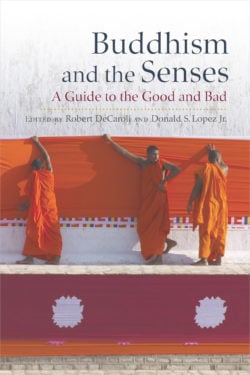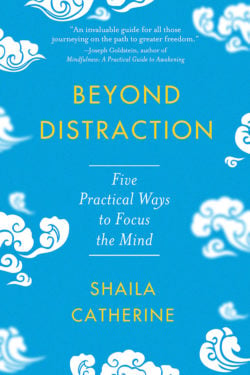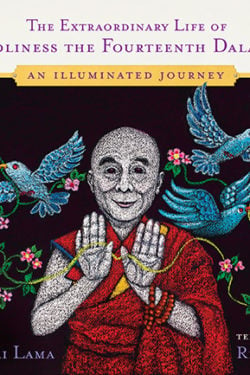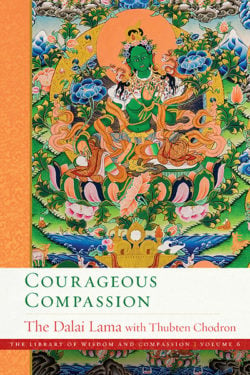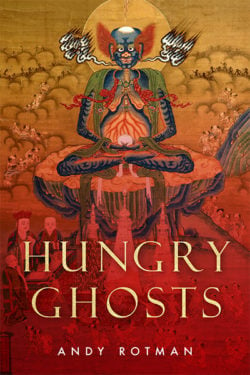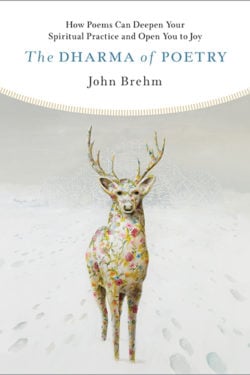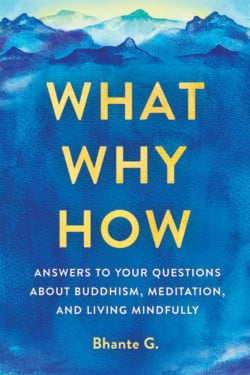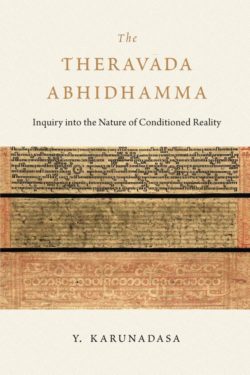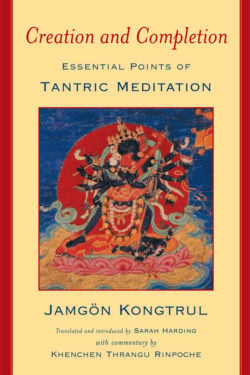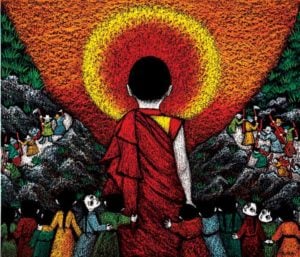
THE MINDFULNESS IN PLAIN ENGLISH JOURNAL
“People ask me how to practice mindfulness in daily life—this journal answers that question.”
—Bhante Gunaratana
Discover the transformative power of mindfulness—in your own words. Based on the classic bestseller Mindfulness in Plain English, Bhante Gunaratana offers compassionate guidance and the space to explore meditation in your own life.
Explore your insights and keep track of your emotional life without judgment, and begin to change the stories you tell about yourself. Includes a brief introduction to meditation so anyone can get started right away, as well as mindfulness tips and inspiring quotes.
- Paperback
- 188 pages, 5.50 x 8.00 inches
- $16.95
- ISBN 9781614293965
A mindful journal for a balanced life—based on the worldwide bestseller Mindfulness in Plain English.
Discover More
The Perfection of Wisdom in First Bloom
See the formative years of Mahayana Buddhist literature through the lens of the Perfection of Wisdom, expertly analyzed by the venerable scholar-monk Bhikkhu Analayo.
In this work we have a rare perspective on the early history of Mahayana Buddhism and the Perfection of Wisdom (Prajnaparamita), as far as this is still accessible in surviving texts. With his characteristic clarity and precision, Bhikkhu Analayo critically analyzes early Perfection of Wisdom literature based on the earliest extant versions of the Astasahasrika Prajnaparamita, or the Perfection of Wisdom in Eight Thousand Lines, one in Chinese and the other in Gandhari—one of the oldest surviving Mahayana manuscripts discovered to date. In reading this text from the viewpoint of early Buddhist literature, the author shows that what has generally been considered a sharp rupture in the formation of the Mahayana turns out to be more of a gradual evolution.
With his command of the languages of the ancient Buddhist world, scholar-monk Bhikkhu Analayo sifts through the layers of history and unveils new perspectives on the ideas and figures in early Perfection of Wisdom and Mahayana literature, covering such topics as the rhetoric of emptiness and the emerging bodhisattva ideal, as well as the status of women and the practice of self-immolation. In doing so, Bhikkhu Analayo reveals fresh insights into the gradual development that informs the emergence of early Perfection of Wisdom literature. This is a rare opportunity to peer through a window at the beginnings of Mahayana thought—before the traditions had coalesced into the familiar forms we see today.
Buddhism and The Senses
Across Buddhist traditions, the five senses—sight, sound, smell, taste, and touch—are perceived both positively and negatively. Share eminent scholars’ fascination and deep insight into what makes a sensuous experience good or bad.
Following the exhibition Encountering the Buddha: Art and Practice across Asia at the National Museum of Asian art, ten eminent scholars present their insights into Buddhism’s fascinating relation with the five senses (sight, sound, smell, taste, and touch), which careens between delight and disgust, rarely finding a middle way. While much of Buddhist literature is devoted to overcoming the attachment that dooms us to rebirth in samsara, primarily by deprecating sense experience and showing that whatever brings us sensual pleasure leads only to all manner of physical and mental pain, in texts such as the Lotus Sutra, sensory powers do not offer sensory pleasure but rather knowledge, clear observation, and ability to preach the Dharma. Considering such religiously and historically contingent ambiguity, this volume presents each of the five senses in two instantiations, the good and the bad, opening up the discourse on the senses across Buddhist traditions.
Just as the museum departed from tradition to incorporate sensory experiences into the exhibition, this volume is a new direction in scholarship to humanize Buddhist studies by foregrounding sensory experience and practice, inviting the reader to think about the senses in a focused manner and shifting our understanding of Buddhism from the conceptual to the material or practical, from the idealized to the human, from the abstract to the grounded, from the mind to the body.
Includes essays by Bryan J. Cuevas, Debra Diamond, D. Max Moerman, Reiko Ohnuma, James Robson, Melody Rod-ari, Kurtis R. Schaeffer, John Strong, and Lina Verchery.
Beyond Distraction
The mind can be a potent tool, used to guide extraordinary achievements, inspire good works, and incline your spiritual path toward peace and awakening. But the mind can also produce thoughts that lead to suffering. For many people, thoughts run rampant and seem to oppress or control their lives. Even the Buddha tells us that before his enlightenment, he sometimes found his mind preoccupied by thoughts connected with sensual desire, ill will, and harm. But he figured out how to respond to thoughts skillfully and developed a step-by-step approach to calm the restless mind. Now, Insight Meditation teacher Shaila Catherine offers an accessible approach to training the mind that is guided by the Buddha’s pragmatic instructions on removing distracting thoughts. Drawing on two scriptures in the Middle Length Discourses of the Buddha, Shaila shows you how to overcome habitual modes of thinking, develop deeper concentration, and discover the insights into emptiness that are vital for a liberating spiritual path.
Following the Buddha’s pragmatic approach, Shaila guides you through five steps for overcoming distraction and focusing the mind:
- Replace unwholesome thoughts with wholesome thoughts.
- Examine the dangers of distracting thoughts.
- Avoid it, ignore it, forget it.
- Investigate the causes of distraction.
- Apply determination and resolve.
Each chapter includes exercises and reflections to help you cultivate the five steps to deeper concentration. You’ll learn about your mind and develop your ability to direct your attention more skillfully in meditation and daily activities. And ultimately, you’ll discover for yourself how these five steps boil down to one key realization: In the moment you recognize that a thought is just a thought, you will find yourself on the path to a life of remarkable freedom.
The Extraordinary Life of His Holiness the Fourteenth Dalai Lama
One of the most revered spiritual figures of our time—His Holiness the Fourteenth Dalai Lama—tells the story of his life in this intimate, timeless, and approachable book. Featuring luminous illustrations from world-renowned artist Rima Fujita and some never-before-shared details, it’s the perfect way to explore the life of the Dalai Lama. This simple yet powerful text combined with stunning artwork will captivate readers of all ages—and will take you on a mystical journey you won’t soon forget.
Also available in Tibetan.
Courageous Compassion
Courageous Compassion, the sixth volume of the Library of Wisdom and Compassion, continues the Dalai Lama’s teachings on the path to awakening. The previous volume, In Praise of Great Compassion, focused on opening our hearts with love and compassion for all living beings, and the present volume explains how to embody compassion and wisdom in our daily lives. Here we enter a fascinating exploration of bodhisattvas’ activities across multiple Buddhist traditions—Tibetan, Theravāda, and Chinese Buddhism.
After explaining the ten perfections according to the Pāli and Sanskrit traditions, the Dalai Lama presents the sophisticated schema of the four paths and fruits for śrāvakas and solitary realizers and the five paths for bodhisattvas. Learning about the practices mastered by these exalted practitioners inspires us with knowledge of our minds’ potential. His Holiness also describes buddha bodies, what buddhas perceive, and buddhas’ awakening activities.
Courageous Compassion offers an in-depth look at bodhicitta, arhatship, and buddhahood that you can continuously refer to as you progress on the path to full awakening.
Learn more about the Library of Wisdom and Compassion series.
Hungry Ghosts
“In this wonderful gem of a book, Andy Rotman offers us a compelling translation of a set of ten Sanskrit Buddhist stories about ‘hungry ghosts’ (preta) taken from the Avadānaśataka (“One Hundred Stories”), an important early Indian anthology of Buddhist narratives. Rotman has brought them into the limelight and shown how important they are for Buddhists and for all of us. Hungry Ghosts will become a standard work on the subject.”
—John Strong, Charles A. Dana Emeritus Professor of Religious and Asian Studies, Bates College
The realm of hungry ghosts is one of the unfortunate realms of rebirth in the Buddhist cycle of existence, and those reborn there are said to have led lives consumed by greed and spite. In one of the earliest sources about hungry ghosts, translated here, hungry ghosts know the error of their ways, and they sometimes appear among humans, like the ghosts that haunt Ebenezer Scrooge, as augurs of what may await. Artistic depictions of the travails of hungry ghosts are found throughout the Buddhist world, and some of the best examples are reproduced and richly described here. Discover how an understanding of the meanness (matsārya) that afflicts hungry ghosts illuminates the human condition, offering insight and inspiring compassion for readers both in ancient times and today.
“Rotman brings new life to old stories about hungry ghosts, and he provides unique insight into their development and their importance even for modern Buddhism. A must-read for students of Buddhist thought and art.”
—Monika Zin, Saxon Academy of Sciences and Humanities, Leipzig University
Superiority Conceit in Buddhist Traditions
Armed with his rigorous examination of the canonical records, respected scholar-monk Bhikkhu Anālayo explores—and sharply criticizes—four examples of what he terms “superiority conceit” in Buddhism:
- the androcentric tendency to prevent women from occupying leadership roles, be these as fully ordained monastics or as advanced bodhisattvas
- the Mahayana notion that those who don’t aspire to become bodhisattvas are inferior practitioners
- the Theravada belief that theirs is the most original expression of the Buddha’s teaching
- the Secular Buddhist claim to understand the teachings of the Buddha more accurately than traditionally practicing Buddhists
Ven. Anālayo challenges the scriptural basis for these conceits and points out that adhering to such notions of superiority is not, after all, conducive to practice. “It is by diminishing ego, letting go of arrogance, and abandoning conceit that one becomes a better Buddhist,” he reminds us, “no matter what tradition one may follow.”
Thoroughly researched, Superiority Conceit in Buddhist Traditions provides an accessible approach to these conceits as academic subjects. Readers will find it not only challenges their own intellectual understandings but also improves their personal practice.
The Dharma of Poetry
In The Dharma of Poetry, John Brehm shows how poems can open up new ways of thinking, feeling, and being in the world. Brehm demonstrates the practice of mindfully entering a poem, with an alertness, curiosity, and open-hearted responsiveness very much like the attention we cultivate in meditation. Complete with poetry-related meditations and writing prompts, this collection of lively, elegantly written essays can be read as a standalone book or as a companion to the author’s acclaimed anthology The Poetry of Impermanence, Mindfulness, and Joy.
Listen to a Wisdom Dharma Chat with John and host Daniel Aitken recorded in October 2023.
Abiding in Emptiness
Before the growth of the Mahāyānā and the Perfection of Wisdom, the Buddha gave his own teachings, to his attendant Ānanda, on the importance of emptiness (Pāli suññatā, Sanskrit śūnyatā) in formal meditation and everyday practice. In this volume, renowned scholar-monk Bhikkhu Anālayo explores these teachings and shows us how to integrate them into our lives.
Bhikkhu Anālayo draws from instructions found in the Greater and the Smaller Discourses on Emptiness (the Mahāsuññatasutta and the Cūḷasuññatasutta). In each chapter, he provides a translation of a pertinent excerpt from the discourses, follows this with clear and precise explanations of the text, and concludes by offering instructions for practice.
Step by step, beginning with daily life and concluding with Nirvana, Bhikkhu Anālayo unpacks the Buddha’s teachings on the foundational teaching of emptiness.
The Buddhist Analysis of Matter
The Buddhist Analysis of Matter is an in-depth study of the Buddhist view of the nature and composition of matter as interpreted in Theravāda Buddhism. The study is mainly based on the seven treatises of the canonical Abhidhamma as well as the subsequent commentarial exegesis. However, in order to bring the subject into a wider perspective and to present it with a measure of precision, it takes into consideration the parallel doctrines of the Vaibhāṣika and Sautrāntika schools of Buddhism. These were two of the leading non-Mahāyāna schools with which the Theravādins had much in common. Both subscribed to a realistic view of existence: while the former had a tendency to extreme realism, the latter had a predilection, but not a commitment, to subjectivism.
Acclaimed scholar Y. Karunadasa’s Buddhist Analysis of Matter provides a much-needed micro view of the topic with a detailed examination of the Theravādins’ list of rūpa-dhammas—the ultimate irreducible factors into which material existence is analyzed. It exposes the nature of the basic material elements and explains their interconnection and interdependence on the basis of conditional relations. It concludes with an attempt to understand the nature and relevance of the Buddhist analysis of matter in the context of Buddhism as a religion.
Creating a Life of Integrity
Creating a Life of Integrity is our personal trainer for strengthening our integrity muscles.
When we don’t speak or act from our own sense of integrity, we feel lousy. Find out how you can live with more integrity—and subsequently more joy—as you follow these lively conversations between Joseph Goldstein, a founder of the modern mindfulness movement, and Gail Stark, a businesswoman and his student and friend of twenty-five years.
As Joseph and Gail unpack the components of integrity—generosity, virtue, renunciation, wisdom, courage, patience, truthfulness, resoluteness, loving-kindness, and equanimity—we discover each is a step on a path that transports us to an empowered place of clarity, commitment, and, consequently, more joy. As we strengthen and weave these qualities into our daily lives they become our trusted first response in a world that needs our integrity now.
Inspiring Forgiveness
Sometimes forgiveness can feel unfathomable, unreachable, or even just plain wrong. Inspiring Forgiveness throws wide open the doors of possibility within the human heart with the wise words of philosophers, writers, poets, and great thinkers from across centuries and continents. Each offering can serve as a guidepost along the path to bringing greater forgiveness into our lives. This book also tells the stories of real-world people—from the Dalai Lama to Congressman John Lewis and more—whose lives were changed forever by forgiveness, including for themselves. Just bearing witness to these experiences can itself be transformative.
One wise teacher quoted in this book, Pema Chödrön, offers a simple practice for cultivating forgiveness: “First we acknowledge what we feel—shame, revenge, embarrassment, remorse. Then we forgive ourselves for being human. Each moment is an opportunity to make a fresh start.” This book is a collection of those moments.
Barbara Bonner’s Inspiring Forgiveness consists of twelve true stories of people who have endured great pain at the hands of others and have found a way to open themselves to forgiveness in its many forms. Each story is followed by extraordinary poems that speak to forgiveness, and the book contains a collection of over 100 inspiring quotations.
What, Why, How
Everything you ever wanted to know but never had a chance to ask about meditation and Buddhist spiritual practice, from one of the greatest mindfulness teachers of our time.
How can I fit meditation into my busy life?
How should I understand karma and rebirth?
Is enlightenment even possible for me?
Sound familiar? If you’ve ever meditated or studied Buddhism, you may have found yourself asking these questions—and many more! Here’s the good news: there are answers, and you’ll find them all in this book. Imagine that you could sit down with one of Buddhism’s most accomplished and plainspoken teachers—and imagine that he patiently agreed to answer any question you had about meditation, living mindfully, and key Buddhist concepts—even the myriad brilliant questions you’ve never thought to ask! What, Why, How condenses into one volume a half-century of Bhante G.’s wise answers to common questions about the Buddha’s core teachings on meditation and spiritual practice. With his kind and clear guidance, you’ll gain simple yet powerful insights and practices to end unhealthy patterns and habits so that you can transform your experience of the world—from your own mind to your relationships, your job, and beyond.
Buddhist Suttas for Recitation
Bring the Buddha’s teachings more deeply into your life.
Buddhist Suttas for Recitation provides everything you need to begin and maintain a practice of contemplative recitation and reflection. These practices will deepen your connection to the Buddha, strengthen your faith in the Path, and nurture your intellectual understanding of the Dhamma.
This unique volume includes carefully chosen discourses of the Buddha from the Pali Canon—presented in inspiring and accessible English with accompanying Pali—that convey the essence of the Dhamma. The introductory material explains the relationship between meditation and devotional practice, offers instructions on setting up a home altar, and gives advice on how to use these texts to enhance your spiritual development.
Start Here, Start Now
A master of mindfulness, who has taught thousands to meditate, Bhante G. will show you exactly how to start your own practice and make it a part of your daily life. The book includes practical advice on
- what to do with the body and mind in meditation;
- how to work with distraction;
- how to deal with physical discomfort in meditation;
- how to overcome drowsiness, boredom, and inability to concentrate;
how to work with fear and agitation, judgments, and self-criticism; - how to avoid trying too hard, expecting too much, or getting discouraged;
- 11 common misconceptions and 10 tips for effective practice; and
- how to get the most out of your practice.
You can start meditating today and, with Bhante G.’s guidance, discover more peace, presence, and joy in everyday life.
The Theravada Abhidhamma
The renowned Sri Lankan scholar Y. Karunadasa examines Abhidhamma perspectives on the nature of phenomenal existence. He begins with a discussion of dhamma theory, which describes the bare phenomena that form the world of experience. He then explains the Abhidhamma view that only dhammas are real, and that anything other than these basic phenomena are conceptual constructs. This, he argues, is Abhidhamma’s answer to common-sense realism—the mistaken view that the world as it appears to us is ultimately real.
Among the other topics discussed are
-
-
- the theory of double truth (ultimate and conceptual truth),
- the analysis of mind,
- the theory of cognition,
- the analysis of matter,
- the nature of time and space,
- the theory of momentary being, and
- conditional relations.
-
The volume concludes with an appendix that examines why the Theravada came to be known as Vibhajjavada, “the doctrine of analysis.”
Not limiting himself to abstract analysis, Karunadasa draws out the Abhidhamma’s underlying premises and purposes. The Abhidhamma provides a detailed description of reality in order to identify the sources of suffering and their antidotes—and in doing so, to free oneself.
Daughters of Emptiness
Printed on demand. This book will be printed especially for you and will ship from a separate warehouse.
Women played major roles in the history of Buddhist China, but given the paucity of the remaining records, their voices have all but faded. In Daughters of Emptiness, Beata Grant renders a great service by recovering and translating the enchanting verse—by turns assertive, observant, devout—of forty-eight nuns from sixteen centuries of imperial China. This selection of poems, along with the brief biographical accounts that accompany them, affords readers a glimpse into the extraordinary diversity and sometimes startling richness of these women’s lives.
A sample poem for this stunning collection:
The sequence of seasons naturally pushes forward,
Suddenly I am startled by the ending of the year.
Lifting my eyes I catch sight of the winter crows,
Calling mournfully as if wanting to complain.
The sunlight is cold rather than gentle,
Spreading over the four corners like a cloud.
A cold wind blows fitfully in from the north,
Its sad whistling filling courtyards and houses.
Head raised, I gaze in the direction of Spring,
But Spring pays no attention to me at all.
Time a galloping colt glimpsed through a crack,
The tap [of Death] at the door has its predestined time.
How should I not know, one who has left the world,
And for whom floating clouds are already familiar?
In the garden there grows a rosary-plum tree:
Whose sworn friendship makes it possible to endure.
—Chan Master Jingnuo
Creation and Completion
Creation and Completion represents some of the most profound teachings of Jamgön Kongtrul (1813-99), one of the true spiritual and literary giants of Tibetan history. Though brief, it offers a lifetime of advice for all who wish to engage in-and deepen-the practice of tantric Buddhist meditation.
The original text, beautifully translated and introduced by Sarah Harding, is further brought to life by an in-depth commentary by the contemporary master Thrangu Rinpoche. Key Tibetan Buddhist fundamentals are quickly made clear, so that the reader may confidently enter into tantra’s oft-misunderstood “creation” and “completion” stages.
In the creation stage, practitioners visualize themselves in the form of buddhas and other enlightened beings in order to break down their ordinary concepts of themselves and the world around them. This meditation practice prepares the mind for engaging in the completion stage, where one has a direct encounter with the ultimate nature of mind and reality.



